What Are the Best Canon Camera Lenses for Product Photography?
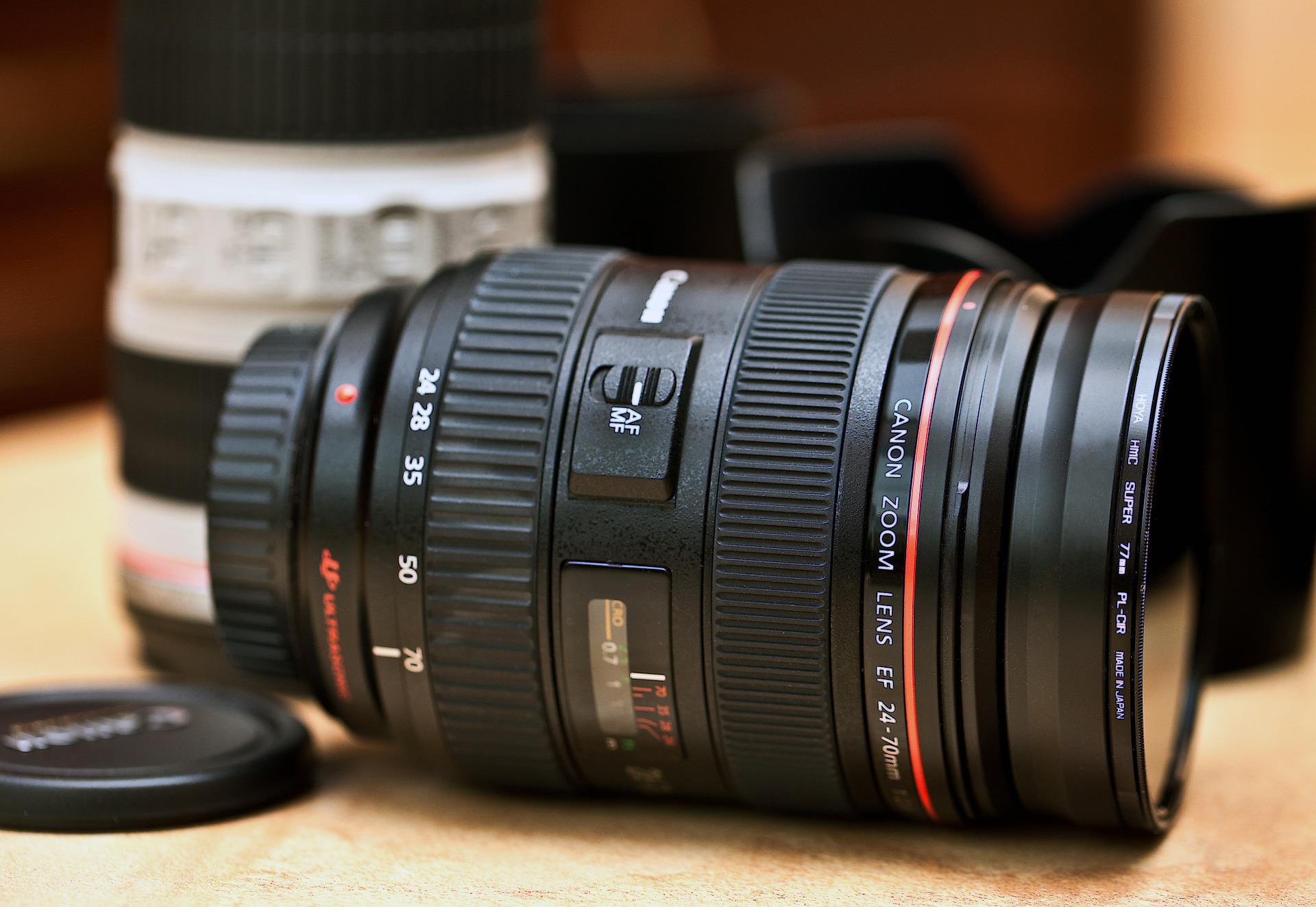
A thousand customers will visit your website because of the perfect product photography. The lens is an important part of the camera, whether you want to keep the same photos or mix them up. Even though cameras take pictures without lenses, product photos with lenses will be great in eCommerce markets like Walmart, Amazon, and eBay. Product photography’s primary goal is to attract customers.
There, we pick the most widely used brand of lens, Canon.
Are you eager to know which Canon Camera Lenses can be your acquaintance in the whole photography journey?
Tracking down the best Canon Camera Lenses for product photography makes your photographic journey so special. Let’s get in.
Contents
Why Choosing the Best Lens Matters for Product Photography?
A camera alone can take photos easily, but they’re just for personal perspectives. While we consider commercial photography, we must think of the emotions around the product and create a story according to them. With a high-quality lens, you can capture those emotions in product photos.
Let’s find out more reasons why it actually matters for product photography.
- A camera lens allows you to take product photos in low light, natural light, or artificial light.
- It consistently creates sharply defined images with its whole range of f/stops.
- When light hits an image sensor directly, as when photographing a product, it records slightly differently than when light hits the sensor from an angle, which results in a small, but noticeable loss of sharpness. So, a quality lens helps to eliminate the lack of sharpness.
- Because of its compatibility, you can use a variety of camera bodies.
- Lenses have the power to reduce chromatic aberration, distortion, and vignetting,
- Although cameras are updated annually, lenses are not. As a result, there is a chance that it will last for many years.
Which Types of Lenses Are Best for Product Photography?
The branch of product photography is vast. For each branch, the proper lenses are required. This is because it provides a piece of detailed information about the product and wins customer attention. We’ve listed some major qualities of product photography lenses that a product photographer must choose.
Macro lens
The macro lens is actually a prime lens that allows you a lot of adaptability in your product and still-life photography. It is best to capture images that are incredibly sharp and finely detailed while being very close to your subject.
Its magnification factor is 1:1 but is sometimes labeled 1:2, which lets you reproduce a life-sized image on your camera’s sensor. Using its 100 mm focal length will enable you to take sharp pictures even when the subject is 31 cm away. Wider angles of view and more areas can be captured with a shorter focal length.
Macro lens product photography lets you produce more visibility than you can see with the naked eye, this can also be called macro photography. When it comes to creating macro photography with the macro lens, you can also change some camera settings for product photography, including aperture, shutter speed, ISO, and lighting setup.
Tilt-shift lens
Tilt-shift is a special kind of lens that works far better when photographing commercial products, and still-life subjects. This specialty lens that relates to the image sensor can be tilted or shifted in a variety of directions.
It enables you to modify the plane of focus and the convergence of parallel lines. With this lens, you can take pictures of two different subjects from two different distances.
Using this lens you can click the flattering angle images like food dishes when it’s on the table and click its 45-degree angle viewed. Even you can eliminate the unnecessary things that affect your frame.
Telephoto lens
Telephoto lenses are bulky and might require a tripod to support them because of their unfortunate habit of camera shaking. If you’re a professional-level product or wildlife photographer, then you probably know how valuable this kind of bulky lens is. As you probably know, the telephoto lens is one kind of prime lens and is best for product photography.
It is perhaps out of your budget, but you can use it for a long time without any issues. It has a focal length of over 100 mm. Unlike a wide-angle, a telephoto lens will provide a much thinner depth of field. It has a unique way to showcase the world by clicking the most unique product shots.
There are some more kinds of lenses, like standard lenses, ultra-wide zoom lenses, and super-telephoto lenses, which are the most common and widely used lenses.
Best Canon Camera Lenses for Product Photography – My Recommendations
Only your current stage of product photography can help you select the best one. The best thing to do is spend your money on the lenses you want. Because it is a type of investment, this is the case. When you make an investment, you should always make the right choice. The following are some lenses:
1. Canon EF 100mm f/2.8L IS

Canon-EF-100mm
The Canon EF 100mm f/2.8L IS Telephoto Lens has the excellent build quality and allows you to take excellent product photos. With a perfect focal length, you can capture the true form of your product shots, which will undoubtedly attract customers, despite the darkness surrounding this aperture.
Each fine detail of the item is uncovered entirely from this perspective. Because it has so many great features and is ranked among the best lens categories, this is the first choice of every product photographer.
Key details:
Dimensions: 4.84X3.07X3.07 inches
Lens Type: Telephoto
Compatible format: EF, APS-C
Focus mode: Manual, Auto
Focal length: maximum 100 mm.
Maximum Aperture: f/2.8
Image Stabilization: Up to four stops VR (Vibrant Reduction)
| Pros | Cons |
| ✅Outstanding image quality | ❌Expensive |
| ✅Excellent ergonomics | ❌Bulky lens hood. |
| ✅Perfect focal length for product photography |
2. Canon EF 50mm f/1.8 STM Lens
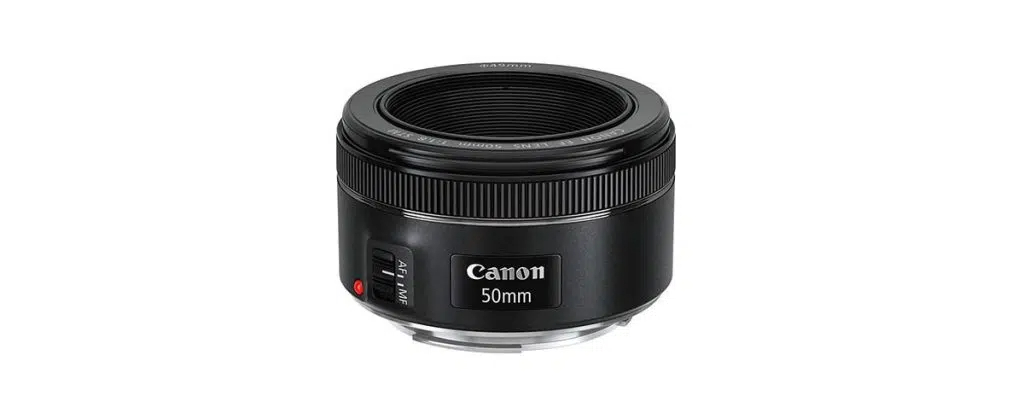
Canon-EF-50mm
50mm of central length can be a decent beginning stage for each item photographic artist. As a starting point, the Canon EF 50mm f/1.8 STM Lens will do an excellent job. Both the image and the build quality are very good. When it comes to taking pictures of high-quality goods, this lens is, on average, superior. It is considered to be the best lens for novices.
Key details:
Dimensions: 1.5×2.7×2.7 inches
Lens Type: Standard Prime Lens
Compatible Format: EF
Focus mode: Manual
Focal length: maximum 50 mm
Maximum Aperture: f/1.8-22
Image Stabilization: in-body
| Pros | Cons |
| ✅Value for money. | ❌Bokeh’s quality isn’t outstanding. |
| ✅Best build quality | ❌Marginal optical improvement. |
| ✅Autofocus and accuracy with STM | |
| ✅Flare resistance, chromatic aberration control |
3. Canon EF 85mm f/1.8 USM
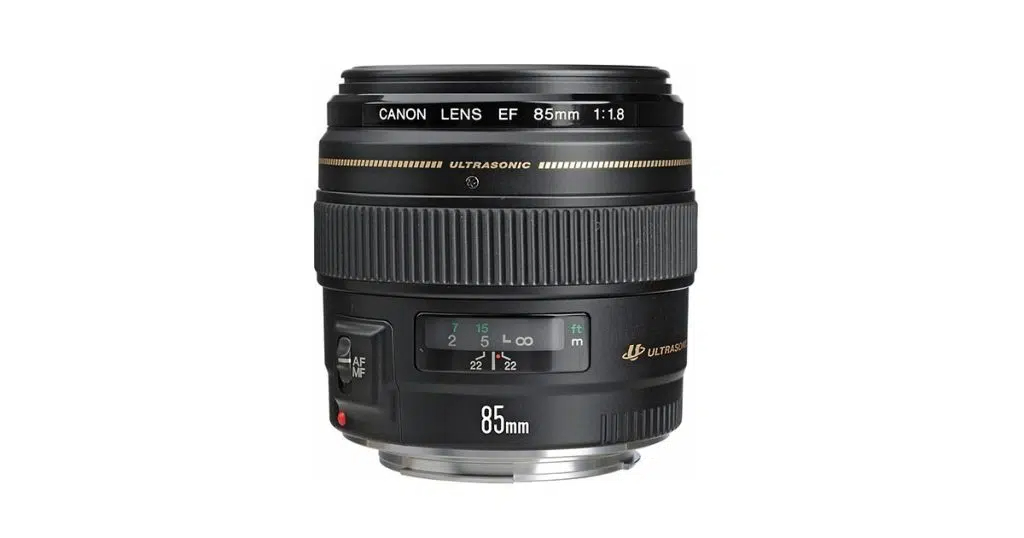
Canon-EF-70-200mm
With a Canon EF 85mm f/1.8 USM lens, engaging product shots were captured with sharp clarity and fine detail, regardless of the background. By using an f/1.8 aperture, product photographers can blur the background to emphasize the main subject. A staggering Bokeh impact is likewise delivered, which makes items pop. It might be your best friend as a product photographer that you won’t want to leave.
Key details:
Dimensions: 2.95 X 2.81 inches
Lens Type: Telephoto
Compatible format: Full-Frame
Focus mode: Auto, Manual
Focal length: maximum 85 mm
Maximum Aperture: f/1.8
Image Stabilization: in-body
| Pros | Cons |
| ✅Easy manual focus | ❌Motor noise. |
| ✅Instant and accurate focus | ❌No weather sealing. |
| ✅Value for money | |
| ✅Lightweight |
4. Canon EF 24-70mm f/2.8L II USM

Canon-EF-24-70mm
For taking product shots, this Canon EF 24-70mm f/2.8L II USM lens meets all of your requirements. It performs exceptionally well with a maximum focal length of 70 mm. Using a standard zoom lens to take pictures is a favorite hobby of a product photographer. Even though we all agree that prime lenses are the best, there are some zoom lenses that will blow your mind when used for product photography. This is one of the most amazing pictures they can take with great attention to detail.
Key details:
Dimensions: 3.0 x 3.7 inches.
Lens Type: Standard Zoom lens
Compatible format: Full-frame, APS-C, APS-H
Focus mode: Auto
Focal length: 24-70 mm
Maximum Aperture: f/2.8
Image Stabilization: None.
| Pros | Cons |
| ✅Sharp throughout the zoom range | ❌Some distortion |
| ✅Fairly compact | ❌Pricey |
| Telescoping design |
5. Canon EF-S 24mm f/2.8 STM Lens

Canon-EF-S-24mm
With its advanced autofocus motor and optical design, the extremely lightweight Canon EF-S 24mm f/2.8 STM Lens helps reduce distortion and chromatic aberrations for high image sharpness and clarity. With an aperture of f/2.8, 24mm is an excellent fixed focal length for outdoor or commercial product shoots. This may be the better option for you if you primarily click product shots rather than studio shots.
Key details:
Dimensions: 2.69X0.9 inches
Lens Type: Wide-angle
Compatible format: EF-S, APS-C
Focus mode: Auto
Focal length: maximum 24mm
Maximum Aperture: f/2.8
Image Stabilization: None.
| Pros | Cons |
| ✅Quick and accurate focus | ❌Fairly strong vignette |
| ✅Well-controlled chromatic aberrations | ❌ In some situations, bokeh is a little busy. |
| ✅Reasonable price |
6. Canon EF-S 55-250mm f/4.0-5.6 IS II
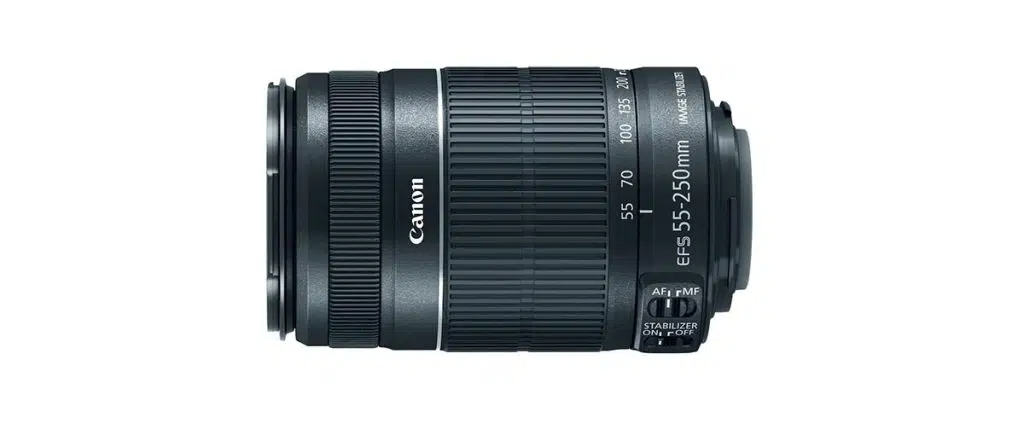
Canon-EF-S-55-250mm
This Ordinance EF-S 55-250mm f/4.0-5.6 IS II zooming focal point guarantees a hazy foundation and optical picture. Due to its maximum focal length of 250mm and aperture of f/4.0-5.6, this lens is the only one that can produce a wonderful click. You can use this telephoto lens to shoot campaign photos of promotional products. It has a rear-focusing system, a fast CPU, and an AF algorithm that does a great job of showing products.
Key details:
Dimensions: 4.25 x 2.76 inches.
Lens Type: Telephoto Zoom Lens
Compatible format: APS-C
Focus mode: Auto
Focal length: 55- 250mm
Maximum Aperture: f/5.6
Image Stabilization: In-body
| Pros | Cons |
| ✅Effective image stabiliser | ❌Plastic lens mount |
| ✅Compact size and low light | ❌prone to veiling at the telephoto end. |
| ✅Autofocus performance in accuracy, speed, and noise. | |
| ✅Low chromatic aberrations and vignette |
7. Canon EF-S 10-18mm f/4.5-5.6 IS STM Lens
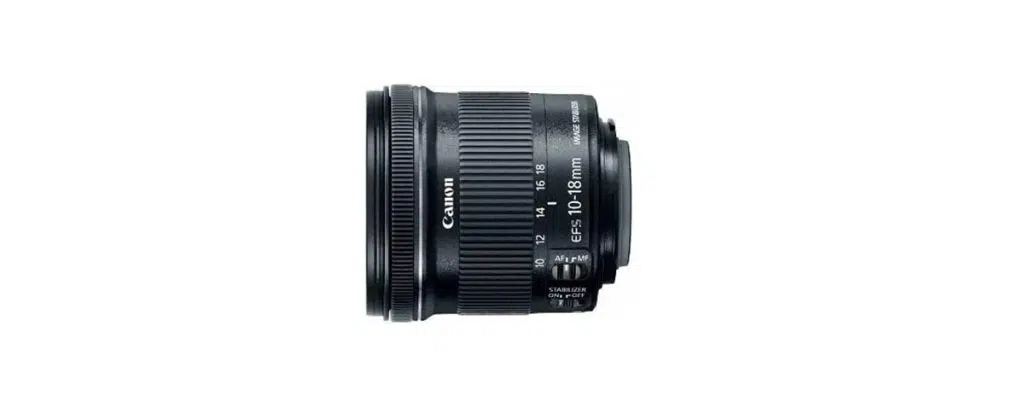
Canon-EF-S-10-18mm
One of the best lenses for product photography, the Canon EF-S 10-18mm f/4.5-5.6 IS STM Lens takes you on an unexpected journey. It has elements with a large diameter and an optical zoom system. Images of products that are appealing to the eye can be used to great effect in product marketing thanks to this lens. The build quality and image quality are of a very high standard.
Key details:
Dimensions: 2.94 x 2.83 inches.
Lens Type: Wide-angle Zoom
Compatible format: APS-C
Focus mode: Auto
Focal length:10-18 mm
Maximum Aperture: f/5.6
Image Stabilization: up to four stops.
| Pros | Cons |
| ✅Perfect pricing with great quality | ❌Hood separately sold. |
| ✅Extremely light | |
| ✅Use image stabilisation |
8. Canon EF 17-40mm f/4L USM
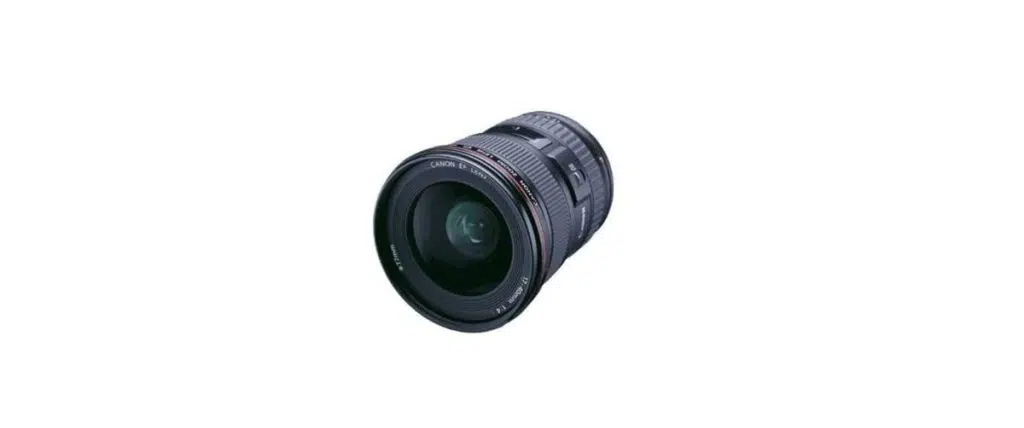
Canon-EF-17-40mm
Due to its exceptional performance all over the world, the Canon EF 17-40mm f/4L USM has gained more popularity on the list of affordable lenses. It is well-designed to protect against dirt and dust. With its cutting-edge performing focal length and aperture, this lens makes no noise and produces stunning product shots. It is one of the most well-liked zoom lenses despite having no fixed focal length.
Key details:
Dimensions: 3.29 X 3.81 inches.
Lens Type: Ultra wide-angle zoom
Compatible format: Full-frame
Focus mode: Manual
Focal length: 17-40 mm
Maximum Aperture: f/4.0
Image Stabilization: None
| Pros | Cons |
| ✅ Very good build quality | ❌Barrel distortion |
| ✅ Lightweight | ❌No IS |
| ✅Weather sealed | ❌Goofy lens hood. |
9. Canon EF 70-200mm f/2.8L is III USM
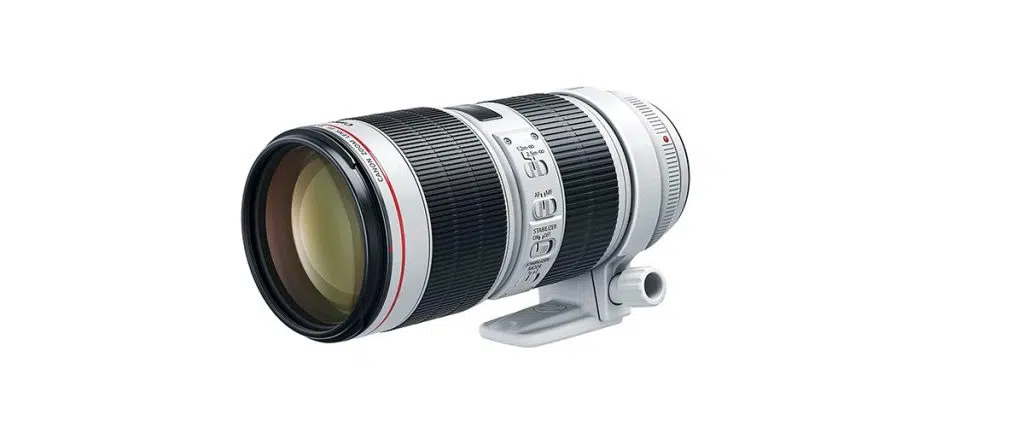
Canon-EF-70-200mm
The most recent technology is included in the Canon EF 70-200mm f/2.8L IS III USM lens. The product’s fine details are brought to the viewer’s attention by its large aperture. It very well might be a piece exorbitant however most item photographic artists should put their cash in it for its fine quality picture and state-of-the-art execution. The best telephoto zoom lens in its class is this one.
Key details:
Dimensions: 3.5×7.83 inches.
Lens Type: Telephoto Zoom
Compatible format: Full-frame.
Focus mode: Auto
Focal length: 70-200 mm
Maximum Aperture: f/2.8
Image Stabilization: up to 3.5 stops
| Pros | Cons |
| ✅Strong sharpness | ❌Some distortion |
| ✅Good build-quality | ❌Modest vignette |
| ✅Dust and moisture protection |
10. Canon EF 100-400mm f/4.5-5.6L IS II USM Lens

Canon-EF-100-400mm
The high-end design of the Canon EF 100-400mm f/4.5-5.6L IS II USM Lens is well-executed. The majority of product, landscape, and wildlife photographers are drawn to it due to its excellent focal length. You can’t deny that its aperture of f/4.5-5.6L and focal length of 100-400 mm demonstrate outstanding image quality. Although it may be cumbersome, you can use a tripod to capture stunning images. It has a stabilizer that is balanced, which might encourage you to buy it.
Key details:
Dimensions: 3.7 X7.6 inches
Lens Type: Telephoto Zoom lens
Compatible format: Full-Frame
Focus mode: Auto
Focal length: 100-400 mm
Maximum Aperture: f/5.6
Image Stabilization: up to 4 stops
| Pros | ❌Cons |
| ✅Great handling | ❌Very expensive |
| ✅Good build-quality | ❌Quite weighty |
| ✅Powerful telephoto zoom range |
Things to Consider While Buying the Best Lens for Product Photography
When purchasing photographic lenses, the focal lengths, maximum aperture, and quality of the lens structure must all be varied. There are additional aspects to take into consideration, such as-
Full frame or Cropped Sensor
The photosensitive surface of the camera sensor in your DSLR makes it essentially rectangular in shape. After detecting light waves, it converts the recorded data into electro signals to produce an image. The camera’s sensor has an impact on the quality of the image, so this is an important consideration when making a purchase.
While APS-C or smaller crop sensors are typically used by niche professionals or general photographers who have spare time to take and share photos on social media, full frame sensors are widely used by professional photographers and for shooting high-end commercial projects. Cameras with a full frame rather than a crop sensor have a higher resolution.
When compared to a crop sensor, a Full frame camera sensor produces images with higher contrast and a much wider dynamic range. The cropped sensor provides a shallower depth of field than a full frame, but the depth of field of the image is dependent on the lens, focal length, and aperture. Compared to a crop sensor, a full-frame sensor has better sharpness, less noise, and more bokeh for the same aperture.
Zoom or Prime lens
When we think of buying a lens, this is the most concerning part, “Which lens is perfectly paired with your DSLR’s Prime Lens or Zoom Lens?”
A prime lens is superior to a zoom lens when it comes to taking convincing photos of food or products. While a zoom lens has a variable focal length, a prime lens has a fixed focal length. Zoom lenses can cause lens diffraction, which occurs when light encounters an object, whereas prime lenses do not.
The ability to produce images with a shallower depth of field and sharper images is inherent in prime lenses. However, product photography can also benefit greatly from the use of high-quality zoom lenses. The lens performs better than a prime lens in terms of speed, image quality, sharpness, and low-light performance.
Even though the prime lens isn’t as versatile as a zoom lens, it’s 24mm wide-angle field of view is great for event photography, landscape photography, and group portraits. It’s 35mm and 50mm normal fields of view stand out when photographing jewelry and cars, food, and Amazon products.
Image Stabilization
Another variable to be considered is picture adjustment. While holding a camera, you can take product shots without worrying about shakiness and with a slower shutter speed thanks to stabilization. You’ll need a smaller lighting setup there. Your camera or lens are included in this feature.
If it’s in the lens, it’s electronically controlled and moved to the other side of any camera shake. When using a longer focal length, smooth operation is made possible by in-lens image stabilization.
You must mount the camera on a tripod while in-camera without turning off IS because, if you do, the feedback loop may sense its own vibration and start moving the camera even when it is still. When the camera is attached to a sturdy tripod, you can disable image stabilization to achieve the sharpest results for your product shots.
Aperture
The aperture is essentially the size of the hole through which light enters the sensor. In product photography, the aperture helps to adjust how much background focus is needed and also the amount of light it lets in.
The larger aperture the more light lets in but the lower depth of field. It also causes more money to be spent. In terms of general view, you want more creative product shots, so you can work with f/4 to f/8, and for background product photography, f/12 to f/16.
Focal Length
The focal length controls how far the lens will expand because a longer focal length will make a subject appear closer. It is must considerable fact while photographing product photography. Focal length influences the DOF (depth of field).
With the longer focal length, the background gets blurry, so the whole focus comes to the center. The product shots on white backgrounds often grab attention as much as the product itself. It also affects the perspective; with its wider lens, the product looks larger than the larger lens.
The sensor size also influences the focal length, so you can go from 50mm to 100mm on a full-frame camera and from 35mm to 60mm on a crop sensor camera. That can be a great choice for product photography branches including furniture, jewelry, outdoor, and packshot.
FAQ
Is a 50mm lens good for product photography?
If you’re a beginner in product photography, a 50mm lens can be just fine to start. This, 50mm lens is furnished with a unique Optical SteadyShot, which prevents obscuring and ensures sharp as well as high-quality pictures.
Do I need a macro lens for product photography?
Definitely, Yes. A macro lens is a versatile lens when it comes to product photography. It can wonderfully capture your tiny and complex products in detail and at an extremely close range.
What Canon lens should every photographer have?
The Nifty Fifty 50mm should be in every photographer’s sack. This prime 50mm lens has very large maximum apertures and is even more affordable than other expensive lenses.
Can I use a wide-angle lens for product photography?
Probably No, Any lens smaller than 50mm could produce wide-angle distortion. This is because, in product photography, your goal must be sharp and present all the details. So you can use a 50mm lens instead of a wide-angle(14-35mm).
Outsource your photo editing for getting your best photo
If you’re looking to outsource your photo editing, there are a few great services available. Clipping Path Manager and Fix the Pix have a great selection of affordable photo editors and can help you find the perfect one for your needs. Clipping Path Manager has a wide range of services available, from photo editing to graphic design. You can find just about anything you need for editing, and the prices are very reasonable. If you’re looking to save money, or just want to try out a few different services before committing to a full-blown contract, Clipping Path Manager is a great option.
When hiring a photo editor, it is important to ask for references. Inquire about their experience with specific photo editing tools and services. Ask about the quality of their work and how they handle revisions.
When choosing a photo editor, it is important to consider the budget and the time you are willing to spend on the project. Many photo editors offer a free trial so you can test the service before paying.
When outsourcing your photo editing, be sure to ask the photo editor to provide a copy of the edited photo. This will help you to make any necessary revisions.
When hiring a photo editor, be sure to ask about their rates and how they handle revisions.
